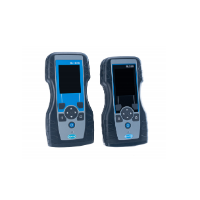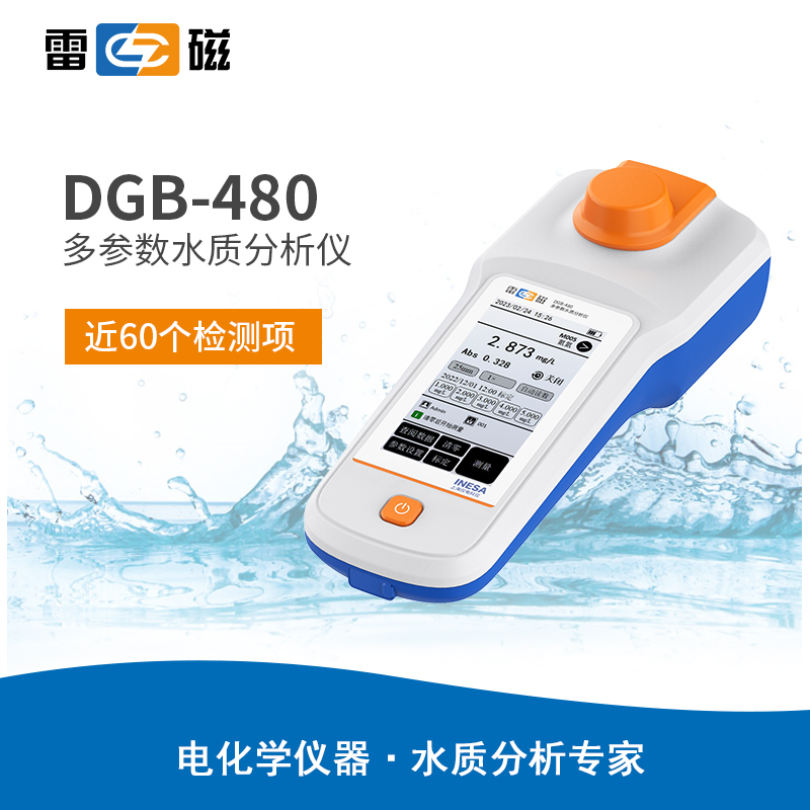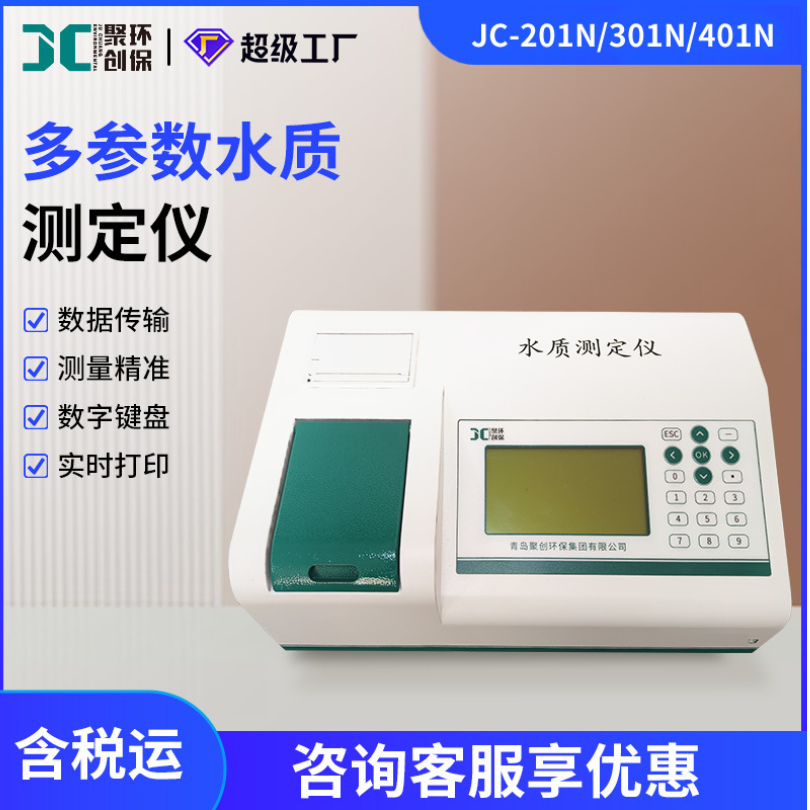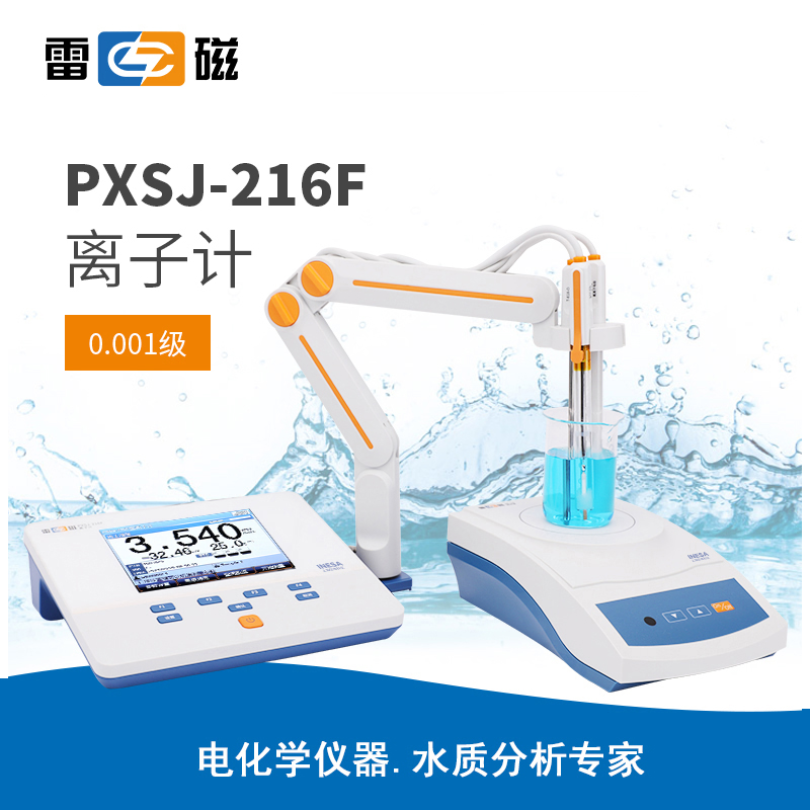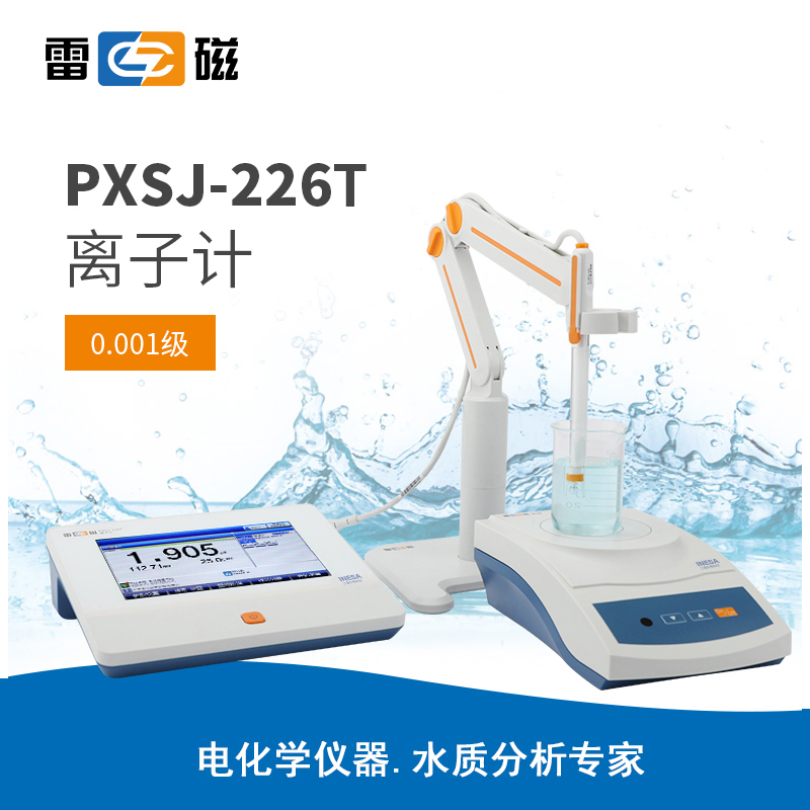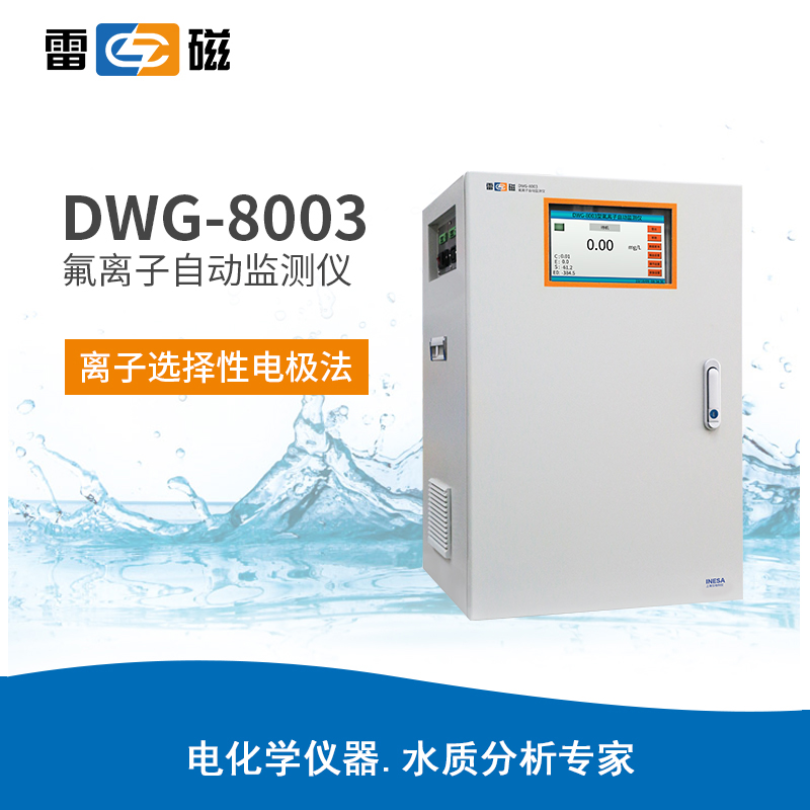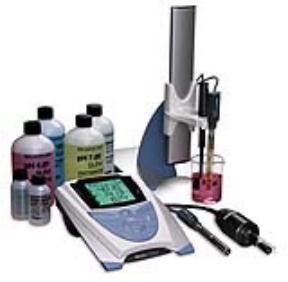
本文章详细介绍了葡萄酒/啤酒中氯离子的测定,包括校准液、水样的准备,校准和测量过程,以及电极和仪表的维护等内容。
方案详情

Chloride inWine/BeerChloride inWine/Beer Chloride inWine/Beer Calibration and Analysis 1. Allow all the standards and the samples to attain room temperature for precise measurements, since themeasurement is temperature sensitive. 2.Calibrate the meter using the 10ppm followed by the 100ppm standard, stirring the standards at a gentle anduniform rate. 3.Place the electrode, ATC probe and stirrer into the beaker with the 10ppm standard such that the electrode tip isfully immersed in the solution. The stirrer should be positioned slightly below the tip of the electrode. Press theSTIRRER key on the meter to turn the stirrer on. Press the CALIBRATE key. 4.Wait for a stable reading (1-2 minutes). Enter the standard value of“10”using the UP and DOWN arrow keysand the DECIMAL/DIGIT key. 5. Press the CALIBRATE key to accept the 10ppm standard and press the STIRRER key to turn the stirrer off. 6.Rinse electrode, ATC probe and stirrer thoroughly with deionized water. Gently remove excess solution from theouter sleeve of the electrode by dabbing with a clean paper tissue. Do not wipe or rub the sensing element of theelectrode. 7.Place the probes and stirrer into the beaker with the 100ppm standard such that the electrode tip is fullyimmersed in the solution. The stirrer should be positioned slightly below the tip of the electrode. Press theSTIRRER key on the meter to turn the stirrer on. 8.Wait for a stable reading (1-2 minutes). Enter the standard value of “100”using the UP and DOWN arrow keysand the DECIMAL/DIGIT key. 9.Press the MEASURE key to accept the 100ppm standard and to move to the measure mode of the meter. Pressthe STIRRER key to turn the stirrer off. 10. Press the SETUP key on the meter. Press the UP or DOWN arrow keys to select the top line. Press the UP orDOWN arrow keys to select "read". 11. Press the LINE SELECTION key to select the bottom line. Press the UP or DOWN arrow keys to select “cont"for continuous measurement. Press the MEASURE key to return to measurement mode. 12. Rinse electrode, ATC probe and stirrer thoroughly with deionized water. Gently remove excess solution from theouter sleeve of the electrode by dabbing with a clean paper tissue. Do not wipe or rub the sensing element of theelectrode. 13. Place the probes and stirrer in a prepared sample with the electrode tip fully immersed in the solution. Press theMEASURE key on the meter; the stirrer will turn on. The ISE: mg/L icon will flash as the measurement is beingmade and become solid when the measurement is stable. Obtain and record the reading after 1 minute elapsedtime. 14. Repeat steps 12 and 13 for additional samples. Upon completion of samples, rinse electrode with deionized waterand store the electrode according to instructions in the Electrode Storage section of this method note. Introduction This method provides rapid, uncomplicated determinations of the chloride ion in wine/beer. The direct measurementof ions using ion selective electrodes is a well-established technique frequently used as a standard method of analysis, asa quality control step and to fulfill labeling requirements. Recommended Equipment Catalog# ISE Application Package (includes all items with a catalog number) 1010140 1. 4 Star benchtop pH/ISE meter 1115000 2.ionplus chloride electrode 9617BNWP 3. Stainless Steel ATC probe 927007MD 4. Orion benchtop stirrer 096019 5. Beakers (50 mL) 6G.raduated cylinder (10 mL and 30 mL) 7. Pipettes (1 mL, 10 mL and 25 mL) (0.040 mL pipette for wine's sample pH adjusting and 0.025 mL for beer sample pH adjusting) 8. Volumetric flasks (100 mL) Vacuum pump (for Beer sample) Required Solutions Catalog# 1.1000 ppm chloride standard 941708 ISA (lonic Strength Adjuster) for electrode 940011 3. Reference Filling Solution, Optimum ResultsTM B 900062 4.Dehydrated Ethanol (Undenatured) 5.Deionized water Calibration Standard Preparation 1. To prepare a 10 ppm chloride standard with 10 % ethanol and 2 % ISA, pipette 1 mL of the 1000 ppm of chloride standard into a 100 mL volumetric flask,add 2 mL of the ISA solution and 10 mL of the dehydrated ethanol solution into the same flask. Dilute to the mark with deionized water. Mix well. 2.To prepare a 100 ppm chloride standard with 10 % ethanol and 2 %ISA, pipette 10 mL of the 1000 ppm of chloride standard into a 100 mL volumetric flask, add 2mL of the ISA solution and 10 mL of the dehydrated ethanol solution into the same flask. Dilute to the mark with deionized water. Mix well. 2.Using a graduated cylinder measure 30 mL of the prepared standards 10 ppm or 100 ppm chloride standard with 10 % ethanol and 2% ISA into a 50 mL beaker. Sample Preparation 1.(Using a graduated cylinder, measure 30 mL of the wine or beer sample into a 50 mL beaker. Mix sample with Orion stirrer. 2. Repeat this procedure for additional measurements. Wine Sample Preparation 1. Pipette 25 mL of the wine sample and1 mL of the ISA into a 50 mL volumetric flask. Dilute to the mark with deionized water. Mix well. 3. Using a graduated cylinder, measure 30 mL of the sample into a 50 mL beaker. 4 Pipette 0.040 mL of the concentrated H,SO into the above beaker to adjust the pH to about 1.8. Results Five aliquots of prepared white wine were measured for chloride. The data in the table below is representative of the resultsexpected for chloride in wine. Prepared Wine ppm (mg/L) Chloride Sample #1: 63.3 Sample #2 59.4 Sample #3: 57.8: Sample #4: 61.6Sample #5 61.9 Mean: 60.8Standard Deviation: 218 %CV 3.69 Note: The average result ofthe ppm chloride in wine was obtained by multiplying the above by the dilution ratio of 2.The final average result was 121.6 ppm chloride in wine. The results were recorded after 1 minute elapsed time. Beer Sample Preparation 1 Use a vacuum pump to degas the beer sample for 20 minutes. .2 Pipette 5 mL of the degassed beer sample and 1 mL of the ISA into a 50 mL volumetric flask. Dilute to the mark withdeionized water. Mix well. 3 Using a graduated cylinder, measure 30 mL of the sample into a 50 mL beaker. 4 Pipette 0.025 mL of the concentrated H2SO4 into the above beaker to adjust the pH to about 1.7. Results Five aliquots of prepared non-alcoholic beer (<0.5% alcohol) were measured for chloride. The data in the table below isrepresentative of the results expected for chloride in beer. Prepared Beer ppm (mg/L) Chloride Sample #1: 11.5 Sample #2: 11.6 Sample #3: 11.7 Sample #4: 11.9 Sample #5: 11.6 Mean: 11.7 Standard Deviation: 0.15 %CV 1.30 Note: The average results of the ppm chloride in beer was obtained by multiplying the above by the dilution ratio of 10. The final average result was 117 ppm chloride in beer. The results were recorded after 1 minute elapsed time. Results may vary based upon differences in samples. For updates regarding Method Development, visit the Thermo Electronwebsite at www.thermo.com/water For brief storage periods between sample measurements, store the electrode in the 0.058 %(-0.01 M) sodium chloridestandard. The fill solution in the electrode should not be allowed to evaporate, which causes crystallization. For longerstorage periods, drain the electrode. Flush the inside with deionized water and store dry with a protective cap to protect thesensing element. If electrode response is slow, polish the sensing element by cutting off 1 inch of the polishing strip andpolish the electrode-sensing element with a circular motion for about 30 seconds. Rinse the electrode with deionized waterand soak in the 0.058%(-0.01M) standard for five minutes. Equipment Setup Electrode Setup-ionpluselectrode 1. Remove the rubber cap covering the electrode tip. 2Fill the outer chamber with Optimum Results B filling solution.3 Lift the spout to a vertical position. 4. Insert the spout into the filling hole in the outer sleeve and add a small amount of filling solution to the chamber. Tipthe electrode to moisten the 0-ring at the top and return electrode to a vertical position. 5 Holding the electrode by the barrel with one hand, use the thumb to push down on the electrode cap, allowing a few. drops of filling solution to drain wetting the inner cone. 6. Release sleeve. If sleeve does not return to its original position immediately, check to see if the 0-ring is moist enoughand repeat steps 4-6 until the sleeve has returned to original position. Add filling solution up to the filling hole. Meter Setup-4 star benchtop For initial meter setup, follow the steps in the Quick Reference Guide, which is attached to the meter itself. The QuickStart Guide included with each meter also contains a layout of the meter keypad for reference. The words in this methodrepresented in all capital letters, such as POWER, indicate a key on the meter, and words in quotations such as “Unit”indicate information on the meter display. 1. . Connect the electrode to the meter. 2. Connect the ATC probe to the meter 3. Connect the stirrer to the meter. 4. Press the POWER key on the meter to turn the meter on 5.Note that the arrow on the left of the screen indicates the active line. If the top line is not active, press the LINESELECTION key to change the selected line to the top line. Then press the UP or DOWN arrow keys to change themeasurement mode of the top line to ISE. 6.Press the SETUP key to enter ISE setup. Press the LINE SELECTION key to select the bottom line. Press the UP orDOWN arrow keys to select “2”for "rES" which is an abbreviation for resolution or number of significant digits. Pressthe LINE SELECTION key to accept setting. 7. Press the LINE SELECTION key to select the middle line, and press the DOWN arrow key to select “nL In"which isan abbreviation for non-linear blank correction. 8.Press the LINE SELECTION key to select the bottom line. Press the UP or DOWN arrow keys to select “off"for "nLIn". Press the LINE SELECTION key to accept setting. 9.Press the LINE SELECTION key to select middle line, and press the DOWN arrow key to select “rAng”which is anabbreviation for measurement range. 10..Press the LINE SELECTION key to select the bottom line. Press the UP or DOWN arrow keys to select "HigH” for“rAng". Press the LINE SELECTION key to accept setting. 11. Press the LINE SELECTION key to select the middle line, and press the DOWN arrow key to select “Unit". 12. Press the LINE SELECTION key to select the bottom line. Press the UP or DOWN arrow keys to select “mg/L”(ppm) for “Unit". Press the LINE SELECTION key to accept setting. 13.Press the MEASURE key to return to the measurement mode. If all steps were followed correctly, the meter display willshow three digits in the top line and “ISE: mg/L" to the right of the top line. The meter and electrode are now readyfor calibration. www.thermo.comoff of of
确定

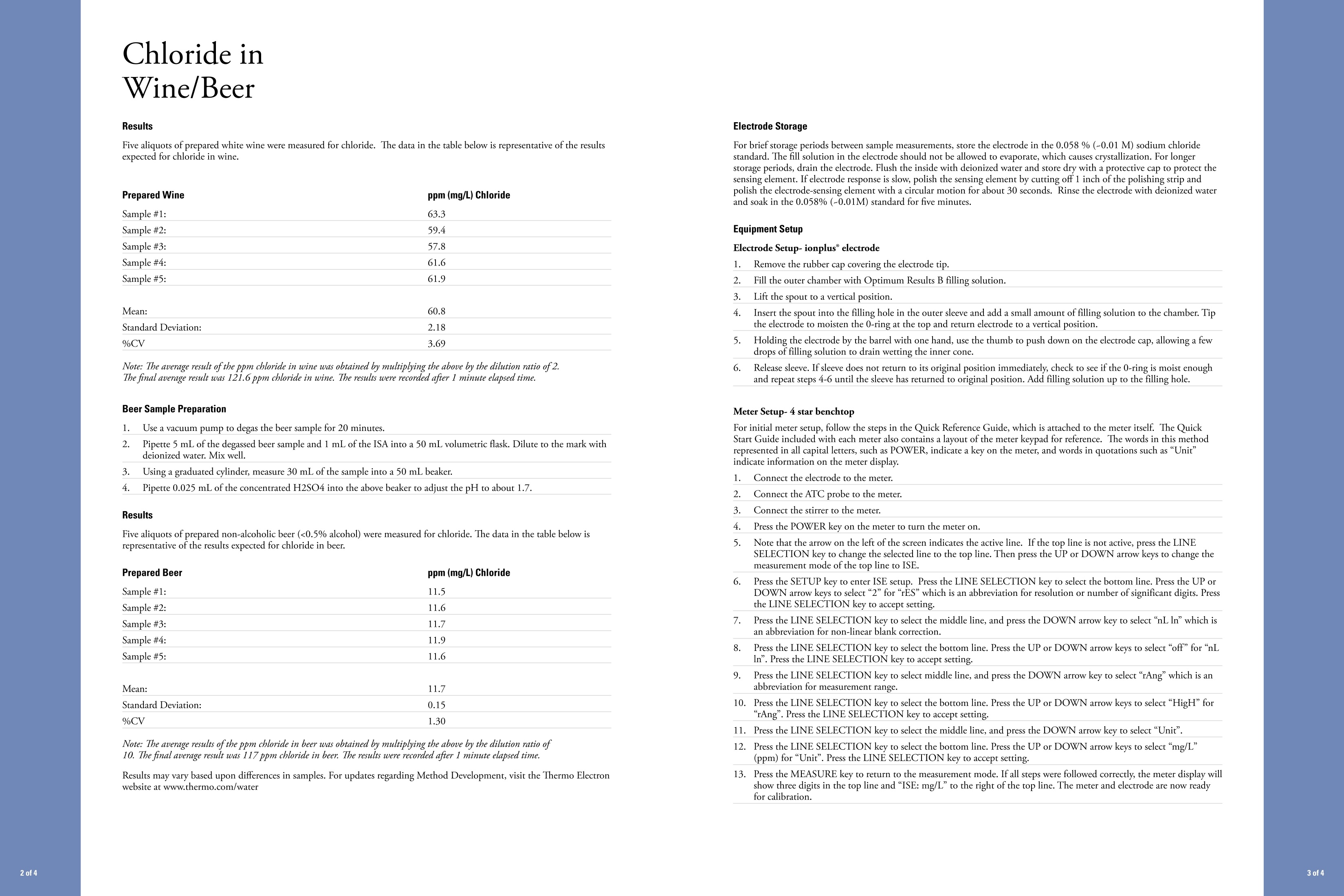
还剩1页未读,是否继续阅读?
赛默飞中国实验室产品事业部为您提供《啤酒中氯离子检测方案 》,该方案主要用于啤酒中理化分析检测,参考标准--,《啤酒中氯离子检测方案 》用到的仪器有台式pH/ORP/ISE/溶解氧/电导率测量仪、Orion 4-Star台式(便携式)pH/离子浓度测量仪
推荐专场
相关方案
更多
该厂商其他方案
更多











